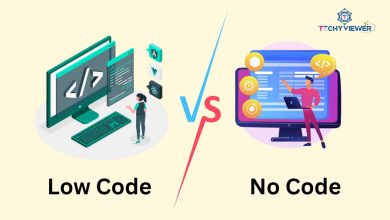React Native vs. Native Apps: Best Choice For Mobile App Development?
In these days of rising technology, the process of innovation will not be complete without mobile app development. The most suitable way to ensure that the new upgraded product is intuitive, step-by-step, and trustworthy is to align it with business processes and developers.
The below-mentioned variations between React Native and Native app development are the road to the top use of technologies, either among developers or users.
React Native is a framework that implements JavaScript for the creation of mobile application platforms similar to Facebook for the iOS and Android operating systems.
However, for the creation of native iOS apps, Apple’s exclusive programming language, Swift, is employed. When it comes to native Android apps, Kotlin or Java are used.
Now that we have a brief understanding of React Native and Native apps, let’s understand them in a little more depth, including all their perks and downfalls.
Understanding Native Apps
A native app is an application developed especially for a platform using programming languages and tools that are specifically built for that stage.
To illustrate, native iOS apps may be built using either Swift or Objective-C, both of which are compiled on Xcode. On the other hand, Android apps are usually developed with Java or Kotlin, and Android Studio is often the tool of choice to code, debug, test, and compile Android apps.
The process uses functions from the foundation block at its best, creating the highest response to the optimization problem.
Check Also: Android Vs iOS: Who Is The Actual Market Leader?
Key Features and Capabilities:
Optimised Performance: Native apps benefit from machine code compilation, resulting in optimal utilisation of device’s hardware and generating fast performance.
Direct Access to APIs and Device Hardware: Native development for an app provides functionalities to directly access the device’s hardware, such as GPS, camera, and accelerometer, without involving any extra interface.
UI/UX Consistency: Apps can be made visually consistent with their respective platforms by codifying brand guidelines and interactive strategies. These play a critical role in easing their use while optimising user experience.
Pros of Native Apps:
Optimal Performance: The application is tailored to work with the hardware used on the platform, hence providing a smooth and steady user experience.
Better Access to Device Features and APIs: Native apps immediately build a connection with the platform to leverage the platform-related particularities. This helps generate better performance for the whole app.
Enhanced User Experience and Interface Capabilities: Developers can introduce interfaces matching both platform integration and aesthetic principles via a specific design language, thereby increasing users’ satisfaction and engagement.
Limitations of Native Apps:
Longer Development Time: Developing an application that can run universally is the first choice; however, developing one consumes a lot of time.
Higher Costs: Native apps need much more monetary input and resources as they will be utilised by many different platforms.
Nevertheless, the native apps are among the most preferred for the task. This is due to its highest level of performance, integration with the device’s operating system, and ability to impart a premium user experience.
Understanding React Native
Facebook has developed React Native, keeping it an open-source framework. Using this language, it is possible to build mobile apps that look native using JS as a programming language. This way of developing apps supports both iOS and Android platforms under one code.
The biggest factor contributing to the success of React Native becoming famous world-wide within 2 years of its launch was its seamless development process. It produced greater output when compared to native apps.
Key Features and Capabilities:
Single Codebase for Multiple Platforms: Develops applications that can run simultaneously on Android as well as iOS operating systems This removes the need for writing two separate codes for individual operating systems.
Live Reloading: Modifications can be seen as soon as they are made, in real time, without any need for recompiling.
Component-Based Structure: To ease management and have expandable projects, modular and reusable codes are provided.
Benefits of React Native:
Cross-Platform Compatibility: Working on a single platform adds the perk of no extra time or cost consumption
Accelerated Development Method: As the whole project will be on a single stage, the work becomes more speedy.
Community and Support: Facebook has vast libraries, tools, frameworks, and different learning settings. This is all due to its active community and firm support framework.
Limitations of React Native:
Performance Issues: Performance will be similar here. There are a handful of heavy computational tasks in React Native that will run as fast as they do on native apps.
Limitations in Accessing Device Features: Exposure to native modules is mandatory to create a bond between features and their specific device. If this is not done, the consequences can be complex operational production and bad performances too.
React Native offers efficiency and functionality, making it the favourite of many developers. However, it is still not suggestive for devices demanding highly advanced requirements, as it will not be able to optimise the full potential of each gadget.
Check Also: How To Benefit From .NET’s Capabilities: A Full Guide
Benchmark Analysis
Each platform has its own set of pros and cons that determine the ultimate success of a mobile application.
Performance Comparison:
- Speed and Responsiveness: In native apps, compilation happens on the machine itself, providing faster and smoother execution of animation.
Considering React Native, despite its good speed, it leaves a chance for some slight delays as it provides an extra layer of translation from JavaScript to native components.
- Case Studies: For example, Facebook and Instagram include React Native and have smooth interfaces, but in tasks with larger computations, the native applications outperform React Native.
However, native apps, such as those for mobile games and video processing, lean towards native development to obtain the most efficiency and outstanding performance.
Flexibility and Scalability:
- Updates and Scalability: The unified developmental base of native React apps enables the potential for faster updating, improved scalability, and additional optimisation.
Native apps grow at a higher pace as a result of all resource-demanding applications, regular OS advances, and regular update implementation.
- Adaptability: Native development has the tendency to encourage early adoption of the latest technology offered through new devices and OS releases. This is all done to achieve improved and more engaging user experience.
Cost and Time Efficiency:
- Development and Maintenance Costs: Pricing is the biggest pro here. The code written for multiple platforms by the React Native feature yields lower initial development and maintenance costs.
When compared to native apps, the cost is high since separate code for each platform is required.
- Development Time: React Native shortens the development cycle as it requires only one team to manage both iOS and Android platforms. On the other hand, native app development needs a separate team for each platform, increasing the development time if the target market is multiple platforms.
User Experience:
- Differences in User Experience: The native apps take a lead here. They nicely fill in the device’s operative software, hardware, and the user interface guidelines of the Native of the device.
While React Native has a good grip on mobile app development, it is sometimes unable to cope with complex animations and transitions.
- Importance of UI/UX: Users’ experience defines the mobile app’s success and the rate of retention. It incorporates the app’s responsiveness, aesthetic characteristics, and ease of use.
The native app performs better than a web app in typical circumstances that require a superior user experience.
Conclusion
React Native provides a low-cost, efficient solution to build cross-platform applications. It is the best suit for projects that come with a limited budget but a goal to get applications deployed in the shortest possible time.
Native apps are much superior in performance and user experience and are better suited for applications that are choosy about high responsiveness and user interface precision.
While tossing React Native and Native apps, pay deep attention to the project’s specifications and the available resources. Along with that, looking at timely delivery and budget efficiency, React Native becomes a preferred option.
Hire React Native app developers to ensure that your app is defined as efficient and effective. As mobile app technologies market to become competitive, having a team of enablers, including the skilled ones, will help you keep an advantage.



